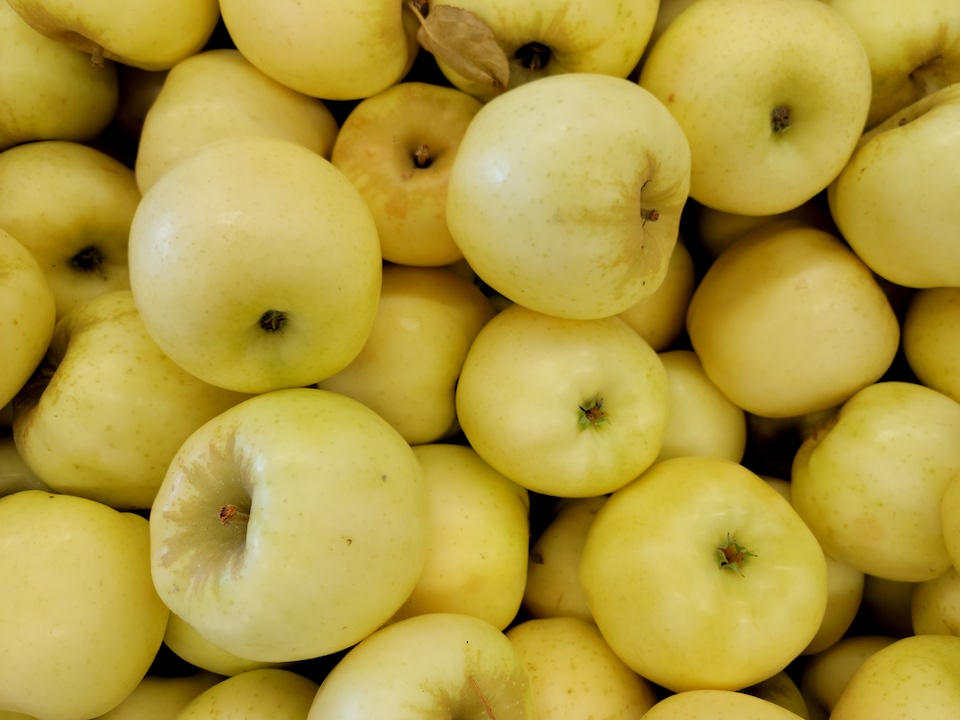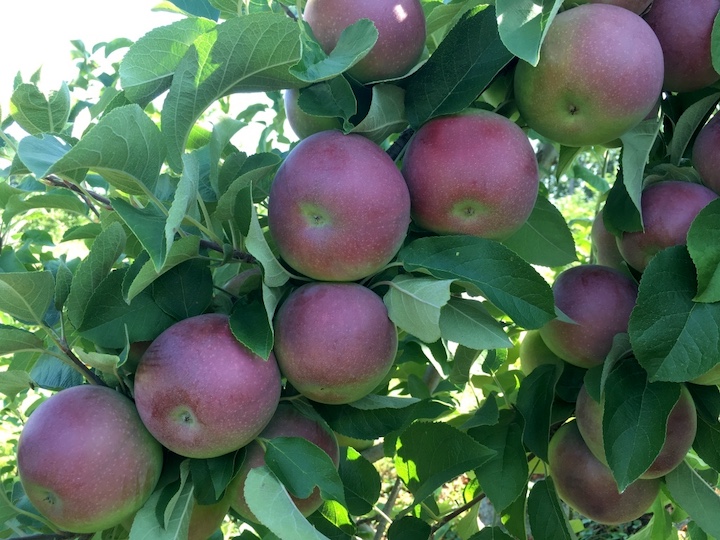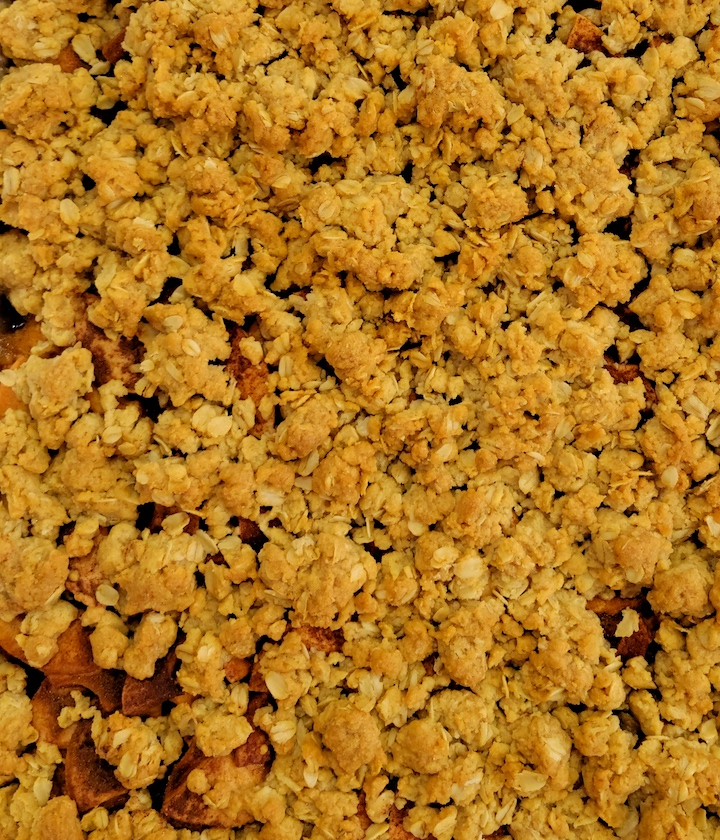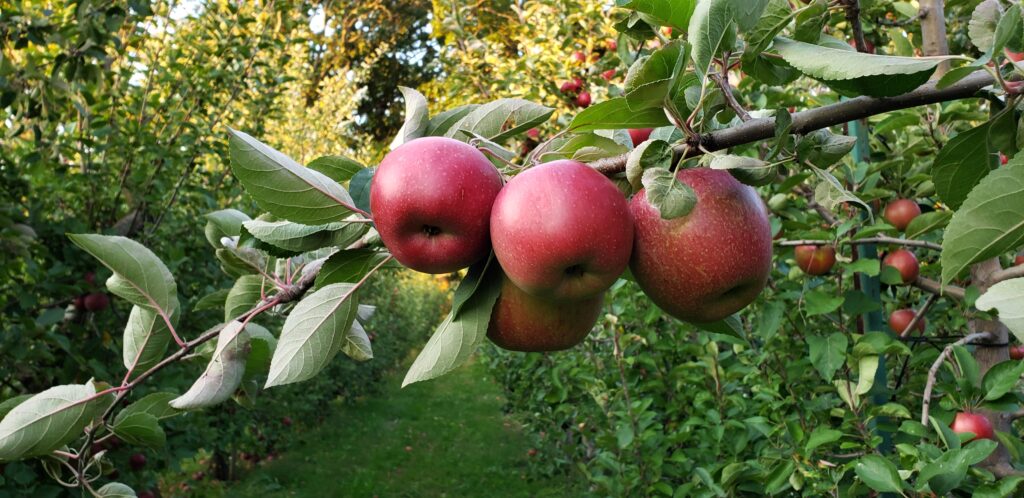
ONE OF THE GREAT VIRTUES of New England’s apple orchards is their diversity. Every orchard is different in landscape, growing style, varieties, and products.
There are orchards with bakeries that make their own cider donuts. Others press fresh cider or produce their own hard ciders.
Many have pick-your-own and grow other fruits and vegetables, or sell locally made honey, jam, or cheese. Some have special activities for children.
Some orchards offer tremendous views. Some are as manicured as lawns.
All of them offer a unique taste of nature as well as phenomenal fruit.
* * *
WHETHER YOU STICK TO YOUR FAVORITE orchard or try a new one, you get not just delicious apples but an authentic, state-of-the-art experience of the ancient art of growing food.
While our orchards preserve something quintessential about New England’s history and landscape, as businesses they must continually adapt to survive. The modern orchard features smaller trees pruned to trellises that produce higher yields and are easier to pick and care for.
Orchards are turning previously unproductive acreage into swaths of wildflowers to feed pollinators, or installing solar panels to help meet their energy needs.
But beyond history and horticulture, the greatest diversity in the modern New England orchard is in the fruit. There are more than 200 apple varieties photographed and described on New England Apple Association’s apple finder, including where they are grown today.
This gives apple lovers an incredible range of flavors, textures, shapes, and sizes to choose from.
Click on the name of any apple to see and read more about it.
* * *

SOME APPLES have great flavor and intriguing names, like Ashmead’s Kernel, Hudson’s Golden Gem, or Pitmaston Pineapple.
Other great-tasting apples hide behind nondescript names, like Braeburn, Creston, and Topaz. When people try them, they are often shocked at how good they are.
Some apples aren’t ready until the end of the harvest, like Mutsu, Cripps Pink (Pink Lady), and Suncrisp.
By then, early season beauties Ginger Gold, Paula Red, and Williams’ Pride are hard to find.
Some apples inspire thoughts of home.
A man visiting our booth in the Massachusetts Building at the Eastern States Exposition (“The Big E”) asks if we have the russeted heirloom Belle de Boskoop, which, he says, is still widely grown in his native Germany.
A woman from Wisconsin inquires about for the large apple Wolf River, one of the few varieties discovered in her state.
Some people grow their own.
A man from Albany, New York, tells us his Golden Russets are small this year, a comment echoed by a woman from Acushnet, Massachusetts, who has Cortland, Golden Delicious, and Macoun among her 20 trees. They blame a combination of drought, poor pollination, and a recovery year for the trees after 2021’s big crop.

A man who comes by for an apple every day is so enamored with the tart heirloom Twenty Ounce from Pine Hill Orchards, Colrain, that he intends to plant two trees in his backyard.
Some have favorite apples passed down through generations, or else have begun their own traditions.
One woman buys a dozen of the early season heirloom Gravenstein from Tougas Family Farm, Northborough, her mother’s favorite pie apple.
Another fairgoer asks if we will have Empire or Jonagold, which they discovered last year.
Meanwhile, Silken have arrived from Cold Spring Orchard, Belchertown, one of the few places that grow it. Silken’s thin skin makes it challenging to cultivate on a large scale, but its juicy, lemony taste inspires instant converts, who eagerly await its return every year.
* * *

FOR MANY NEW ENGLANDERS, McIntosh has become virtually synonymous with “apple.” McIntosh’s iconic red-and-green skin hints at the distinctive, sweet-tart flavor within.
Its familiar round shape, heady aroma, exceptional juiciness, and versatility, fresh, cooked, or pressed into cider, make McIntosh highly sought-after.
It tends to break down when cooked; some bakers mix a few Macs with other varieties for firmer texture.
More than just an outstanding apple, though, McIntosh tells us something about our past.
Its distinguished history — discovered in Canada in 1801, introduced in the United States in Vermont in 1869, and becoming New England’s most popular apple after a deadly freeze killed thousands of Baldwin trees in the winter of 1933-34 — adds to McIntosh’s mystique.
McIntosh enjoy a second life, becoming sweeter and mellower over time, especially if not kept cold.
But fresh picked or straight from storage, McIntosh’s characteristic juicy snap encapsulates New England’s diverse landscape and seasons.
* * *
THESE ARE JUST SOME of the many apple varieties found at New England’s orchards.
Whether it’s an old favorite like McIntosh, a newer one like Fuji or Gala; a New England native like Baldwin, Roxbury Russet, or Northern Spy, or the latest locally grown varieties such as Ambrosia or EverCrisp, learn all about it — including who grows it —using our Apple Finder.
When it comes to a favorite New England apple, it isn’t necessary — or even possible! — to choose just one.

* * *
THIS IS THE FINAL WEEKEND for the Big E, which ends its 17-day run Sunday, October 2. Daily hours in the Massachusetts Building are 10 a.m. to 9 a.m.
The forecast looks ideal for visiting an orchard; use our Orchard Finder to chart your destination (and always call ahead to confirm what’s available).
If you cannot make it out to the farm, come by the New England apples booth for fresh apples, delicious baked goods (including cider donuts!), and fresh Carlson’s apple cider served ice cold, hot with mulled spices, or mixed into a frothy apple pie smoothie.

2 Comments
Jan
Your photographs are beautiful and so lovely to look at year round!
Missed my time at the Fair and I hope it has gone very well for you this year.
Lots of painting days ahead for us my friend!!!
Russell Powell
Thank you so much! It is a privilege to photograph apples and orchards.